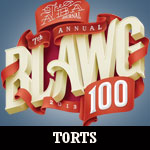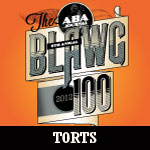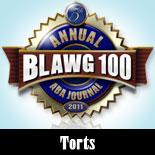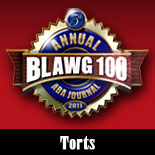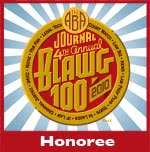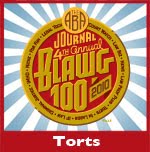First entering the public consciousness in 1994, the Stella Liebeck trial, known as the McDonald’s hot coffee case, has become such a fixture of litigation lore that many are unaware of the basic facts of the case, or even where and when it was tried. Litigated and reported upon before the rise of the Internet, much of what appears online about the case is the worst sort of unsourced speculation and conjecture. Our friends at Overlawyered have done an excellent job over the years dispelling the various myths about the case, including those that have arisen suggesting that the industry standard was to serve coffee at temperatures lower than that of McDonald’s. In an effort to publish some of the basic facts of the case, we here at Abnormal Use have created the following FAQ file regarding the matter. In so doing, we have relied solely upon the original pleadings and motions in the case and some contemporary news coverage.
On February 27, 1992, seventy-nine year old department store clerk Stella Liebeck was in the passenger seat of her grandson’s Ford Probe when she ordered a 49 cent cup of coffee at the drive through of a McDonald’s franchise in Albuquerque, New Mexico. Shortly thereafter, she spilled the coffee into her lap and sustained a series of burns. Her original state court lawsuit was filed in March of 1993, tried in August of 1994, and ultimately settled for an undisclosed sum in late 1994. Media coverage of the jury’s original verdict was, shall we say, immense.
Where was the case filed and tried?
The Second Judicial District Court in Bernalillo County, New Mexico.
What did the complaint allege?
Filed on October 5, 1993 the Plaintiff’s Amended Complaint recited the following allegations:
A. The coffee purchased by her on 2/27/92 was unreasonably dangerous because it was excessively hot and Defendants are liable to her for the physical and mental harm which it caused at the time of its sale and consumption on 2/27/92.
B. The product in question, coffee, was and is routinely sold and manufactured by the Defendants, and it reached Plaintiff in the same condition as it was at the time of the sale; further, Plaintiff in no way is guilty of any fault and the Defendants are strictly liable to Plaintiff under the Restatement of Torts Second, §402(a);
C. The coffee was defectively manufactured, served in a container that had design defects, and the coffee itself was manufactured defectively due to excessive heat; further, the container that it was sold in had no warnings, or had a lack of warnings, rendering the product defectively marketed;
D. The producing cause of Stella Liebeck’s injuries was the exclusive fault of the Defendants;
E. At all material times Defendants were aware of the dangerous condition of the coffee inherent in serving it at the temperature at which it was sold; they knew of the likely consequences of such acts; they knew of the risks involved and acted with a conscious indifference and willful and wanton disregard for the safety of Stella Liebeck and any other consumer of the product;
F. Defendants are expert manufacturers, distributors, and sellers of coffee and had a duty to test and inspect the product for unreasonably dangerous conditions, which they either failed to do, or alternatively, which they did negligently, or in the alternative, did with malice with complete disregard for the dangers inherent in selling coffee at the temperature at which it was sold causing a high probability of severe burns in connection with the sale of the product.
What damages were alleged in the amended complaint?
As set forth in the Amended Complaint, the damages purportedly sustained and sought were:
VI.
As a result of spillage of the defective coffee, Plaintiff sustained burns on her perineum, upper inner thighs, buttocks, genital areas, and lower abdominal wall including the left groin. The burns consisted of both second and third degree burns and were of such severity as to require debridement and skin grafting, causing enormous conscious pain and suffering, mental anguish, and loss of life’s enjoyment, for which she seeks damages. The foregoing treatment caused Plaintiff to incur medical expenses in the past, at the present, and into the reasonable future as follows: (a) past medical expenses: approximately $10,500.00; (b) future medical expenses: approximately $2,500.00. Total: $12,500.00.
VII.
Plaintiff Stella Liebeck was born on XX/XX/12 and was 79 years old at the time of the injury. At the time in question Plaintiff was a healthy, robust, and gainfully employed person, who worked as a sales clerk and earned in excess of $5,000.00 per year; Stella Liebeck has incurred lost earnings of approximately $5,000.00.
IX.
Further, as a direct result of the fault, or in the alternative, the negligence of the Defendants, Plaintiff has sustained severe disfigurement and permanent scarring to her body, which she claims has damaged her in an amount of not less than $100,000.
X.
As a result of the severe and painful burns described herein, Plaintiff sues the Defendants in the amount of $125,000 for physical pain, mental pain and anguish, and loss of life’s enjoyment during the pendency of treatment including skin grafting, debridement, and general recovery from painful scarring, as well as pain and discomfort associated with drawn and tight skin in the scarred areas, which pain and discomfort persists at the present and will persist into the future.
XI.
Plaintiff comes now and sues McDonald’s Corporation and McDonald’s Restaurants P.T.S., Inc. for gross negligence, for willful and wanton disregrad of the rights, safety, and welfare of Stella Liebeck and any other consumers that purchase coffee in the defective state in which it is sold by Defendants, and for the marketing defect of no warning, or in the alternative, insufficient warning, because McDonald’s Corporation and McDonald’s Restaurants P.T.S., Inc. fully know of and are aware of innumerable burn cases caused by the fault, or in the alternative, negligence of their operations in the manufacture, sale, and marketing of extremely hot coffee. For this, Plaintiff comes now and sues in the amount of three times compensatory damages for punitive damages.
What were McDonald’s defenses?
In its Answer to the Amended Complaint, filed on September 22, 1993, McDonald’s asserted the following affirmative defenses:
SECOND DEFENSE
If the Plaintiff was injured and damaged as alleged, then her injuries and damages were the result of her own negligence or of the negligence of a third person or party for whom this Defendant may not be held responsible.
THIRD DEFENSE
If the Plaintiff was injured and damaged as alleged, which is specifically denied, then her injuries or damages were the result of an accident or inadvertence which was not the fault or responsibility of this Defendant.
FOURTH DEFENSE
Plaintiff has failed to mitigate her damages.
FIFTH DEFENSE
Plaintiff should be required to make a prima facie showing of entitlement to punitive damages before any evidence hearing thereupon is adduced before a jury.
SIXTH DEFENSE
Plaintiff’s claims for excessively hot coffee fail to state a claim for which this Court might grant relief.
SEVENTH DEFENSE
At all material times, these Defendants adhered to the applicable standard of care and engaged in reasonable conduct.
Who was sued?
In the original complaint, which was filed on March 21, 1993, Plaintiff only sued P.T.S., Inc., a New Mexico corporation and the local franchise operator. In the amended complaint, however, the McDonald’s corporation was added as a defendant. Ultimately, P.T.S., Inc. was dismissed as a defendant prior to the matter being submitted to the jury.
Where was the McDonald’s franchise in question?
The franchise was located at 5001 Gibson Blvd., S.E., Albuquerque, New Mexico 87108. According to Google Maps, there’s still a McDonald’s franchise at that location:
View Larger Map
Is there a reported opinion?
Yes. The trial court’s original order entering the jury verdict is available on Westlaw as Liebeck v. McDonald’s Restaurants, P.T.S., Inc., No. CV-93-02419, 1995 WL 360309, (In the Second Judicial District Court of New Mexico, Bernalillo County, August 14, 1994). However, there is no reported appellate opinion due to a confidential settlement several months after the verdict.
Who was the judge?
The Honorable Robert Hayes Scott was the state court district judge who presided over the case. He is now a United States Magistrate Judge for the U.S. District Court for the District of New Mexico in Albuquerque. He was initially appointed to the position in 2003.
Who were the Plaintiff’s attorneys?
The lead Plaintiff’s attorney was S. Reed Morgan of S. Reed Morgan & Associates (now of the Law Offices of S. Reed Morgan, P.C.) of Comfort, Texas. Serving as counsel with him were Jerry R. McKenney of Houston, Texas (who at the time of the filing of the original complaint, had been licensed just two years) and local counsel Kenneth R. Wagner of Kenneth R. Wagner & Associates, P.A. (now of Wagner Ford Law, P.A.) in Albuquerque, New Mexico.
Who were the defense attorneys?
Bruce Hall, Tracy McGee, Susan S. Throckmorton, and Charles K. Purcell, all of the Rodey, Dickason, Sloan, Akin, & Robb, P.A. firm in Albuquerque, New Mexico. Now the managing partner of the Albuquerque office of Jackson Lewis, Danny W. Jarrett was then a law clerk at the Rodey firm who executed a summary judgment affidavit setting forth coffee temperature measurements he took at six local restaurants as a part of the defense case.
What were some of the pretrial motions filed in the case?
On January 21, 1994, the defendants moved for summary judgment. The motion was denied. On July 29, 1994, a hearing was conducted on Plaintiff’s Motion for Partial Summary Judgment. The parties stipulated as to causation of the injuries – that the burns were caused by the coffee. On July 29, 1994, in a letter decision, Judge Scott denied Plaintiff’s motion as to liability.
What was the basis of the McDonald’s motion for summary judgment?
In support of its motion for summary judgment, McDonald’s alleged the following as “undisputed material facts” upon which it based its motion:
1. Plaintiff Stella Liebeck was a passenger in a vehicle which proceeded through the drive-through window of a McDonald’s Restaurant (franchisee P.T.S., Inc.) located at 5001 Gibson, S.E., in Albuquerque, New Mexico, on or about February 27, 1992. Complaint for Damages, Paragraph III.
2. At the time in question, Plaintiff was 79 years old. Complaint for Damages, Paragraph VI.
3. Subsequent to purchasing the coffee, Plaintiff spilled it on herself, sustaining second and third degree burns to her upper inner thighs, buttocks, and other areas of her body. Complaint for Damages, Paragraph VI.
4. Plaintiff has alleged that the coffee was “excessively hot” and “defective” because of its high temperature. Plaintiff’s Complaint, Paragraph IV.
5. The second and third degree burns which Ms. Liebeck sustained could have been sustained at temperatures as low as 130 Fahrenheit. Aff. of Turner M. Osler, M.D., Para. 17.
6. The fact that the coffee that Ms. Liebeck spilled on herself may have been slightly or even significantly hotter than 130° Fahrenheit does not mean that her injuries were worse or more extended than they would have been otherwise. Aff. of Turner M. Osler, M.D., Para. 18.
7. Ms. Liebeck’s age may have caused her injuries to have been worse than they might have been in a younger individual, as the skin of an older person is thinner and heals less easily than the skin of a younger individual; however, even a young adult could have sustained third degree burns after spilling liquid at a temperature of as low as 130° on herself. Aff. of Turner M. Osler, M.D., Para. 19.
8. Unless Ms. Liebeck removed all of her clothing immediately, the clothing may have served to hold in the heat of the spilled liquid, and this may have aggravated the nature and extent of her injury; however, to a reasonable degree of medical probability, she would nevertheless have sustained third degree burns as a result of the coffee spilled. Aff. of Turner M. Osler, M.D., Para. 20.
9. A survey of six (6) fast food or restaurant establishments and two (2) private residences was conducted in September 1993 by Danny Jarrett. Aff. of Danny Jarrett, passim.
10. As part of this survey, Mr. Jarrett used a standard food thermometer and measured the temperature of coffee brewed and maintained at these locations. Aff. of Danny Jarrett, Paras. 3 & 4.
11. Mr. Jarrett’s measurements of coffee were taken when it was first served to him, after approximately 15 minutes, and after approximately 30 minutes. Aff. of Danny Jarrett, passim.
12. The coffee was served to Mr. Jarrett in containers ranging from styrofoam cups to ceramic mugs. Aff. of Danny Jarrett, passim.
13. At no location did Mr. Jarrett record the temperature of freshly served coffee below 130°. Aff. of Danny Jarrett, passim.
After citing several cases in support of its position, McDonald’s argued:
Defendants contend that Ms. Liebeck’s burns were not the result of serving excessively hot coffee, as other restaurants in this community have been demonstrated to serve coffee at temperatures which, for the sake of argument, might be lower than those served at the McDonald’s in question, but which also were high enough temperatures to have still caused the type of injuries and burns that Ms. Liebeck sustained.
It is unclear from the materials currently available whether McDonald’s submitted a memorandum in support of its motion.
What was the Plaintiff’s argument in her summary judgment motion?
In her motion for summary judgment, Plaintiff, after relying upon McDonald’s responses to requests for admission and the deposition testimony of McDonald’s Quality Assurance Group Manager of Administration Christopher D. Appleton, argued:
Plaintiff contends that Defendants have admitted, either through testimony or requests for admission, all elements of products liability and breach of warranty sufficient to prove her case on liability and causation. Moreover, the lack of an adequate warning makes the product defective. The lack of an adequate warning has been admitted by the Defendants. Therefore the product was defective. The defective product caused the burns to Ms. Liebeck’s body. There are no material issues of fact remaining for decision on Plaintiff’s claims of product defect with injuries caused thereby.
Similarly, the Defendants have admitted that the product, when sold, was not fit for its intended purpose, consumption. Accordingly, there no longer exists any material question of fact on the question of whether Defendants breached the implied warranty of fitness for a particular purpose; Defendants themselves have admitted the breach.
(Record citations omitted).
When did the case go to trial?
August 8-12 and 15-17, 1994.
Who were the testifying experts?
The defense experts were as follows:
Christopher Appleton (McDonald’s Manager of Quality Assurance). Viewed as an ineffective witness, Mr. Appleton apparently admitted that he was aware of the risk of hot coffee and had no plans to reduce the temperature. (Gerlin, Andrea. “A Matter of Degree,” The Wall Street Journal, September 1, 1994). Further, Mr. Appleton stated that the number of reported burns from McDonald’s coffee in relation to the total number of cups sold was not high enough to justify the modification of the serving temperature.
Dr. P. Robert Knaff (human factors engineer). Dr. Knaff testified that the number of prior coffee burn victims was statistically trivial in comparison to the number of cups sold.
Dr. Turner M. Osler (medical expert). Dr. Osler submitted an affidavit, stating that in his opinion, Ms. Liebeck would have suffered the same extent of burns had she been served coffee at a temperature as low as 130 degrees.
The Plaintiff’s experts were as follows:
Dr. David Arredondo (Mrs. Liebeck’s treating physician). Dr. Arredondo testified as to the extent of Mrs. Liebeck’s injuries. Mrs. Liebeck suffered burns to approximately six percent of her body – 90 percent of which were third-degree burns. Further, he testified that elderly people are more susceptible to burns than younger people due to the thinning of the skin that occurs with age.
Dr. Charles Baxter (burn specialist). Dr. Baxter offered his opinion at trial that coffee served at 180 degrees was excessive and could not be consumed at that temperature. Dr. Baxter opined that the optimal temperature range to serve coffee was between 155 and 160 degrees. (Historical footnote: He operated on President Kennedy and Governor Connally on November 22, 1963).
Dr. Kenneth Diller (thermodynamicist). At his deposition, Dr. Diller testified that, in his opinion, McDonald’s was serving an unreasonably dangerous product when it sold its consumers hot coffee in styrofoam cups without warning of the possibility of sustaining burns.
Dr. Lila F. Laux (psychologist). Dr. Laux testified that the addition of a warning to the McDonald’s coffee would have influenced Mrs. Liebeck’s behavior.
Melissa Patterson (economist). In calculating hedonic damages of $660,900 from the date of Mrs. Liebeck’s injury, Ms. Patterson assumed that Ms. Liebeck lost all enjoyment of life the moment she was burned and would continue to have no enjoyment until her death.
What was the original verdict?
The jury found for the Plaintiff on her claims of product defect, breach of implied warranty, and breach of the implied warranty of fitness for a particular purpose. The jury also found that Plaintiff was twenty percent at fault.
What were the damages awarded?
After deliberating four hours, the six man, six woman jury initially awarded $200,000 in compensatory damages, which was reduced by the judge by $40,000 due to the finding of comparative fault. The jury also awarded $2.7 million in punitive damages.
What became of the verdict?
McDonald’s filed post-trial motions. In late August or early September 1994, Judge Scott appointed retired New Mexico Supreme Court Justice William F. Riordan to mediate the dispute and ordered the parties to “make a good faith effort to resolve and completely settle all pending issues.” (“Conference Ordered on Spilled Coffee,” Associated Press, Tulsa World, September 2, 1994, available at 1994 WLNR 5089128). On September 16, 1994, Judge Scott denied McDonald’s motion for new trial and motion for judgment notwithstanding the verdict, noting that “the compensatory award of $160,000 shall not be disturbed.” However, in that same order, the court noted as follows: “The award of punitive damages of 2.7 million dollars was excessive, as a matter of law. Accordingly, a new trial shall be granted on all issues unless Plaintiff accepts — by written notice to the Court within 25 days of the date of entry of this Order – a remittitur of the punitive damages award as hereby directed by the Court. The remittitur, if accepted, shall reduce the punitive damages award to $480,000, which represents the trebling of the $160,000 award of compensatory damages.” In so doing, Judge Scott commented that the new punitive amount was justified due to “‘willful, wanton, reckless and what the court finds was callous” conduct on the part of McDonald’s. (Associated Press, “Ruling Eases Heat on McDonald’s; Restaurant Will Still Appeal Coffee Verdict,” Wichita Eagle, September 15, 1994, available at 1994 WLNR 823624). At that time, McDonald’s spokesperson Ann Connolly told the Nations’ Restaurant News that “[s]afety is always our first concern, and that is why we have ‘hot contents’ printed as a reminder on our cups. We knew the initial damages awarded were excessive and unjustified, and yesterday the judge acknowledged that and agreed. But we feel they are still excessive, and we will appeal this decision.” “(Judge slashes McD settlement to $480,000: slams chain as ‘callous’ but reduces $2.9M jury decision,” Nation’s Restaurant News, September 26, 1994, available at 1994 WLNR 5313844). In early October of 1994, the New Mexico Supreme Court denied Liebeck’s appeal of the reduction of the punitive award. At that time, McKenney was quoted as saying that “[a] decision has to be made whether to seek a new trial or accept the reduced amount.” (“Court Refuses to Raise Award for Coffee Spill,” The Chicago Tribune, October 14, 1994, available at 1994 WLNR 4335536). On November 3, 1994, Judge Scott denied Plaintiff’s October 21, 1994 motion for reconsideration of the remittitur order. Finally, on November 28, 1994, the court vacated the judgment, presumably due to the confidential settlement which was announced in the media the following week.
What efforts were made to settle the matter?
Liebeck initially approached McDonald’s with a demand of $20,000 to cover her medical bills, future medical expenses, and lost income. McDonald’s countered with an offer of $800. (Gerlin, Andrea. “A Matter of Degree,” The Wall Street Journal, September 1, 1994). As trial approached, Liebeck’s settlement demand increased to approximately $300,000. (Id.). After denying McDonald’s motion for summary judgment, the trial judge ordered the parties to attend mediation. During the session, the mediator recommended that McDonald’s accept a $225,000 offer. (Id.). McDonald’s declined. Following the jury verdict and the trial court’s reduction of the punitive damages award, both parties appealed. Before the case was heard on appeal, the parties settled out-of-court for an undisclosed sum. When the settlement was announced, Wagner claimed that “McDonald’s now (is putting) warnings on its coffees as have some of the other fast food chains. That was her principal objective, to make things safe. Have you ever had McDonald’s coffee? It’s hot, hot hot. It’s as hot as the water in your radiator.” (“McDonald’s settles suit over burns from coffee,” The Houston Chronicle, December 2, 1994, available at 1994 WLNR 5009816).
What was the immediate reaction to the verdict?
The public immediately reacted to the size of the verdict; the consensus was that it was excessive in light of the perceived contributory negligence of the Plaintiff. The media reaction sent the Plaintiff’s bar into damage control mode. On October 24, 1994, The National Law Journal published a letter to the editor from Morgan, who noted as follows:
There has been a great uproar from people displeased at the size of the verdict, who see it as an example of the product of a runaway jury and a plaintiff who will not accept responsibility for her actions.
…
McDonald’s Corp. sold its coffee at 180-190 degrees Fahrenheit by corporate specification. McDonald’s coffee, if spilled, could cause full-thickness burns (third degree to the muscle/fatty tissue layer) in two to seven seconds.
McDonald’s knew about this unacceptable risk for more than 10 years; it was brought to the company’s attention by other lawsuits (more than 700 reported claims from 1982 to 1992). The company’s witnesses testified that it did not intend to turn down the heat. McDonald’s generates revenues in excess of $1.3 million daily from the sale of coffee alone.
Ms. Liebeck’s treating physician testified that this was one of the worst scald burns he had ever seen. Other expert witnesses termed the risk of harm from McDonald’s coffee to be unacceptable.
Most consumers don’t know that coffee this hot causes such injuries. Nor do they know McDonald’s made a practice of serving its coffee this hot.
The jury applied the law of punitive damages to deter McDonald’s and other similarly situated corporations from exposing consumers to this risk. It imposed a penalty of two days’ revenue from coffee sales, or $2.7 million, for willfully ignoring the safety of customers who feed the McDonald’s money tree. The system has numerous methods of overturning a verdict that is excessive.
Why should we tolerate corporate irresponsibility? What’s wrong with penalizing irresponsible behavior that injures consumers?
The news media, the day after the verdict, established that coffee at the McDonald’s in Albuquerque is now sold at 158 degrees. At that temperature, it would take about 60 seconds to cause third-degree burns. Mission accomplished.
(Morgan, Reed. “Verdict Against McDonald’s Is Fully Justified,” The National Law Journal, October 24, 1994, available at 10/24/94 Nat’l L.J. A20).
Morgan had similar letters published in both The Legal Times and the Texas Lawyer. (Reed Morgan, Reed. “McDonald’s Burned Itself,” The Legal Times, September 19, 1994, available at 1994 WLNR 5431838 and Morgan, Reed, “McDonald’s Burned Itself; What’s Wrong With Penalizing Corporate Irresponsibility That Burns And May Kill Our Consumers?,” Texas Lawyer, September 12, 1994, available at 1994 WLNR 5430539).
What was the substance of the McDonald’s post-trial arguments?
In its memorandum in support of its post trial motions, filed on August 29, 1994, McDonald’s argued as follows:
There can be no doubt that potable coffee is, by its very nature, hot. The evidence in this case establishes that there is nothing unique about McDonald’s coffee in this regard: although billions of cups of coffee are consumed without incident every year, all restaurateurs serve coffee at temperatures high enough to cause third-degree burns under certain conditions. Indeed, the courts of New Mexico have cited coffee spillage (not service) as a classic example of a negligent act, presumably because this sort of accident so often has consequences serious enough to merit the law’s attention. The scalding potential of coffee is so well understood that the courts almost take it for granted.
(citations omitted; emphasis in original).
The Wall Street Journal quoted one McDonald’s state court motion as saying: “First-person accounts by sundry women whose nether regions have been scorched by McDonald’s coffee might well be worthy of Oprah. But they have no place in a court of law.” (Gerlin, Andrea. “A Matter of Degree,” The Wall Street Journal, September 1, 1994).
What became of Stella Liebeck?
Born in December of 1912, she died on August 5, 2004 at age 91.
How has popular culture referenced the case?
One of the most famous pop culture parodies of the case is the episode of “Seinfeld” in which Kramer (Michael Richards), burned by a cup of hot coffee, hired flamboyant Plaintiff’s attorney Jackie Chiles (Phil Morris). Plaintiff’s attorney Susan Saladoff recently released Hot Coffee, a documentary on the case and an analysis of the civil justice system, about which we wrote here.
[This FAQ was researched and prepared by Jim Dedman and Nick Farr.]





